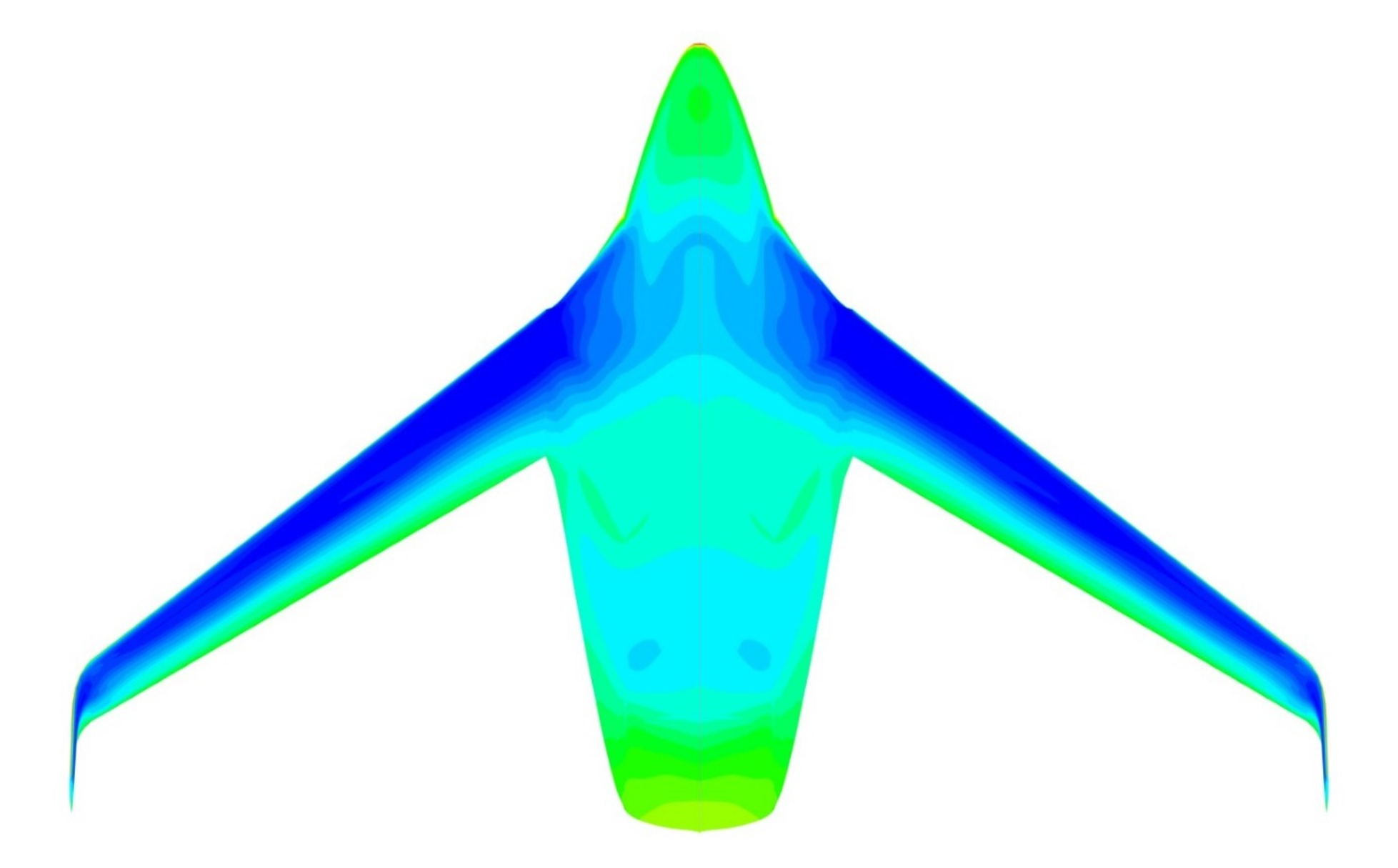Research
Professor Zingg’s research areas include aerodynamics, computational fluid dynamics (CFD), aerodynamic shape optimization, and multidisciplinary optimization. His current research concentrates on both algorithm development and application of aerodynamic and multidisciplinary optimization to the design of unconventional low-drag aircraft configurations motivated by the need to reduce greenhouse gas emissions from aircraft.
 The motivation for the research in the computational aerodynamics group is based on the urgent need to reduce the impact of aviation on climate change. In order to eliminate its net emissions of carbon dioxide, aviation will have to move quickly away from kerosene to potentially sustainable alternative fuels such as biofuels and hydrogen. However, as the availability of such fuels is not ensured, and their costs are expected to remain considerably higher than kerosene for the foreseeable future, it is critical that the energy efficiency of aircraft be improved more rapidly than has been achieved in the past.
The motivation for the research in the computational aerodynamics group is based on the urgent need to reduce the impact of aviation on climate change. In order to eliminate its net emissions of carbon dioxide, aviation will have to move quickly away from kerosene to potentially sustainable alternative fuels such as biofuels and hydrogen. However, as the availability of such fuels is not ensured, and their costs are expected to remain considerably higher than kerosene for the foreseeable future, it is critical that the energy efficiency of aircraft be improved more rapidly than has been achieved in the past.
The specific goals of the computational aerodynamics group are:
- To advance the state of the art in algorithms for CFD as well as aerodynamic and multidisciplinary optimization.
- To apply these algorithms to the development of drag reduction techniques and the next generation of aircraft with greatly reduced greenhouse gas emissions per passenger-km.
 The group currently has strong interactions with several organizations, most notably Bombardier Aerospace, NRC’s Aerospace Research Centre, and the NASA Ames Research Center. Graduates of the group have recently been hired by Bombardier, NASA, Pratt & Whitney Canada, and ANSYS.
The group currently has strong interactions with several organizations, most notably Bombardier Aerospace, NRC’s Aerospace Research Centre, and the NASA Ames Research Center. Graduates of the group have recently been hired by Bombardier, NASA, Pratt & Whitney Canada, and ANSYS.
At the core of the research are novel algorithms for CFD and aerodynamic shape optimization developed by the group. The parallel implicit flow solver Diablo combines an efficient Newton-Krylov-Schur algorithm with a higher-order spatial discretization based on summation-by-parts operators and simultaneous approximation terms applicable to multi-block structured grids. This combination provides a unique and powerful algorithm for the numerical solution of the Reynolds-averaged Navier-Stokes equations as well as large-eddy and direct simulations of turbulent flows. The optimization code Jetstream utilizes this flow solver in conjunction with an adjoint technique for gradient evaluation and novel approaches to mesh movement, geometry parameterization, and geometry control. Jetstream has been applied to the optimization of various wings, inlets, and aircraft, including the blended wing-body, the strut-braced wing, the box wing, and the flying V.
 Several current projects in the computational aerodynamics group are aimed at the development of novel high-order methods for CFD based on the summation-by-parts property for both structured and unstructured grids. In recent years, the group has made some important contributions in this area that have led to numerous opportunities for future research. In addition, several projects are aimed at the development of new algorithms for aerodynamic and multidisciplinary optimization. Finally, the group continues to develop and investigate the blended wing-body, strut-braced wing, box wing, and flying V configurations as well as boundary-layer ingesting engines.
Several current projects in the computational aerodynamics group are aimed at the development of novel high-order methods for CFD based on the summation-by-parts property for both structured and unstructured grids. In recent years, the group has made some important contributions in this area that have led to numerous opportunities for future research. In addition, several projects are aimed at the development of new algorithms for aerodynamic and multidisciplinary optimization. Finally, the group continues to develop and investigate the blended wing-body, strut-braced wing, box wing, and flying V configurations as well as boundary-layer ingesting engines.